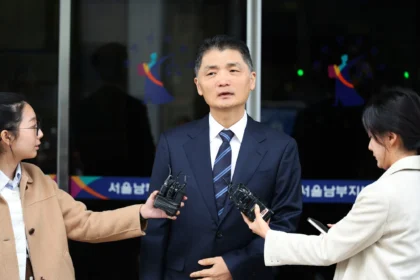After two years of relentless optimism around artificial intelligence—soaring valuations, aggressive investment, and record-breaking stock rallies—the market has entered a phase of sharp correction. Major AI-linked companies, from semiconductor giants to cloud platforms and even software innovators, have seen their stock prices fall as investors reassess expectations, cash out gains, and question whether near-term earnings can justify long-term hype.
For CEOs, especially those leading companies that rely on or invest heavily in AI, this new environment demands calm, clarity, and strategic discipline. The challenge is not simply surviving the downturn—but leading through it without losing sight of long-term opportunity.
- After two years of relentless optimism around artificial intelligence—soaring valuations, aggressive investment, and record-breaking stock rallies—the market has entered a phase of sharp correction. Major AI-linked companies, from semiconductor giants to cloud platforms and even software innovators, have seen their stock prices fall as investors reassess expectations, cash out gains, and question whether near-term earnings can justify long-term hype.
- Why the AI Selloff Is Happening
- 1. Overextended valuations
- 2. Slowed earnings growth
- 3. Over-saturation of announcements
- 4. Macro uncertainty
- 5. Competition intensifying
- What CEOs Must Avoid During the Selloff
- 1. Overcorrect strategically
- 2. Chase noise instead of signal
- 3. Communicate fear or uncertainty
- 4. Sacrifice long-term innovation for short-term optics
- 5. Lose trust with investors
- How CEOs Can Stay Clear-Eyed and Lead Decisively
- 1. Refocus on Real AI Returns, Not Buzzwords
- 2. Reinforce Long-Term AI Vision—Even When Markets Panic
- 3. Communicate Transparently With Investors
- 4. Protect Core Talent and Culture
- 5. Strengthen Operational Resilience
- 6. Look for Acquisition Opportunities
- 7. Build a Post-Hype AI Strategy
- 8. Stay Connected to Customers’ Real Needs
- The CEOs Who Win the AI Selloff Will Shape the Next Decade
As history has shown, from the dot-com collapse to the 2008 recession, the strongest companies are those whose leaders maintain vision while navigating turbulence.
Why the AI Selloff Is Happening
Understanding the selloff is the first step toward responding to it strategically.
1. Overextended valuations
AI supplier companies—particularly chipmakers, GPU-dependent cloud providers, and early-stage AI startups—saw valuations far ahead of fundamentals. When expectations peaked, corrections became inevitable.
2. Slowed earnings growth
Companies that promised aggressive AI-driven revenue transformations have struggled to translate early pilot projects into sustainable profits.
3. Over-saturation of announcements
Markets became numb to AI press releases. Investors started asking:
- Where is the revenue?
- Where are the customers?
- Where is the real competitive moat?
Hype fatigue set in.
4. Macro uncertainty
Higher interest rates, geopolitical tension, and inflationary pressures reduced appetite for high-growth tech stories.
5. Competition intensifying
The moat around generative AI narrowed as:
- Open-source models improved
- Model commoditization accelerated
- Hardware limitations emerged
- Enterprises slowed experimentation
In short, expectations inflated faster than execution.
What CEOs Must Avoid During the Selloff
A selloff environment tempts leaders to react impulsively. But the CEOs who falter are those who:
1. Overcorrect strategically
Slashing AI budgets or pivoting away from long-term innovation because of short-term market pressure is a critical mistake.
2. Chase noise instead of signal
Reacting to every market dip or analyst headline leads to inconsistent strategies and shaken internal morale.
3. Communicate fear or uncertainty
Employees, partners, and customers take cues from tone at the top. A worried CEO amplifies market panic internally.
4. Sacrifice long-term innovation for short-term optics
Cutting R&D to boost quarterly margins may please markets briefly but weakens long-term competitive positioning.
5. Lose trust with investors
Failing to articulate a clear AI strategy creates a vacuum investors fill with worst-case assumptions.
How CEOs Can Stay Clear-Eyed and Lead Decisively
The best leaders combine realism with optimism, using market downturns to sharpen strategy and strengthen execution.
1. Refocus on Real AI Returns, Not Buzzwords
AI investments must transition from “innovation theater” to tangible business outcomes.
CEOs should ask:
- Does AI reduce costs meaningfully?
- Does it create measurable revenue?
- Is it improving customer experience or just generating demos?
Companies that can quantify AI’s impact grow stronger during downturns.
2. Reinforce Long-Term AI Vision—Even When Markets Panic
A visionary roadmap must remain intact, even as execution adjusts.
This includes:
- Commitment to core AI R&D
- Investment in foundational infrastructure
- Clear prioritization of AI use cases with highest ROI
- Avoiding “AI FOMO” when competitors jump into new hype cycles
Companies that weather downturns are those grounded in durable fundamentals rather than speculative narratives.
3. Communicate Transparently With Investors
CEOs should shift communication from:
- grand AI promises
to - execution-based updates
Investors reward:
- evidence of efficiency
- disciplined spending
- realistic timelines
- steady progress
A calm tone, consistent messaging, and data-backed progress reports build confidence even when stock prices fall.
4. Protect Core Talent and Culture
AI-driven companies are in a long-term talent war.
During market declines, morale can deteriorate.
CEOs must:
- reassure top performers
- communicate stability and opportunity
- protect critical AI teams from budget cuts
- emphasize career growth pathways
Talent retention becomes a competitive edge when rivals freeze hiring or reduce innovation initiatives.
5. Strengthen Operational Resilience
Market volatility is a chance to tighten execution:
- streamline processes
- eliminate redundant projects
- accelerate automation
- renegotiate cloud and infrastructure contracts
- improve unit economics
Operational sharpness becomes essential when investor sentiment shifts.
6. Look for Acquisition Opportunities
Downturns create rare openings:
- undervalued AI startups
- distressed competitors
- cheap intellectual property
- affordable high-caliber engineering teams
CEOs with liquidity and long-term vision can transform their competitive position during selloff periods.
7. Build a Post-Hype AI Strategy
The AI market is moving from early exuberance to sustainable maturity.
CEOs must adapt accordingly.
This includes:
- pivoting from model creation to enterprise integration
- prioritizing real-world deployments over research demos
- focusing on vertical solutions, not general-purpose AI
- aligning AI investments with core business strategy
When hype dies, business impact becomes the only metric that matters.
8. Stay Connected to Customers’ Real Needs
Customers are asking:
- Which AI products actually solve my business pain?
- Which AI tools reduce cost, not increase it?
- Which vendors can guarantee security and reliability?
CEOs should keep feedback loops strong, ensuring AI investments map directly to market demand.
The CEOs Who Win the AI Selloff Will Shape the Next Decade
Market corrections historically weed out weak narratives and weak companies.
But they also produce the next generation of category leaders.
In the coming AI decade, the winners will be CEOs who:
- lead with clarity, not panic
- double down on long-term value
- optimize operations without destroying innovation
- communicate honestly with investors
- preserve top-tier talent
- capture opportunity from market weakness
The AI selloff is not the end of the boom—it’s the beginning of the real AI era, when execution, not exuberance, separates leaders from laggards.







